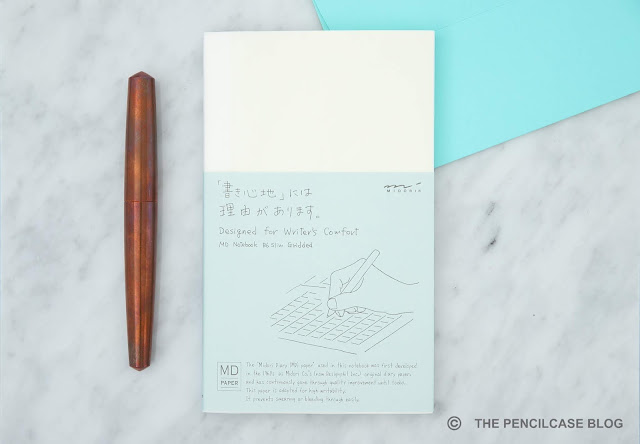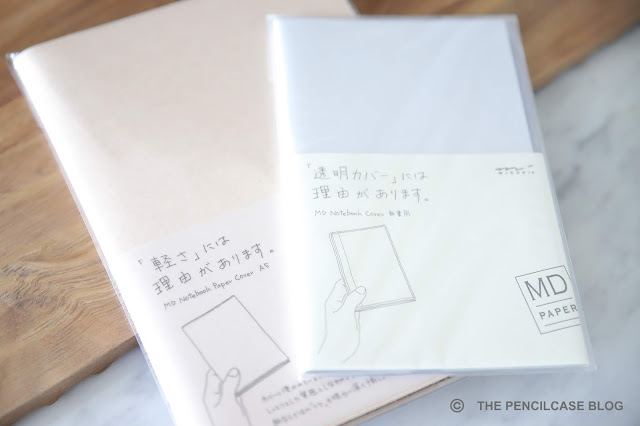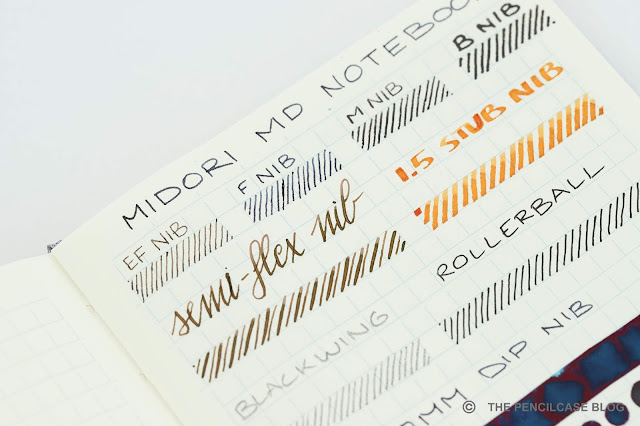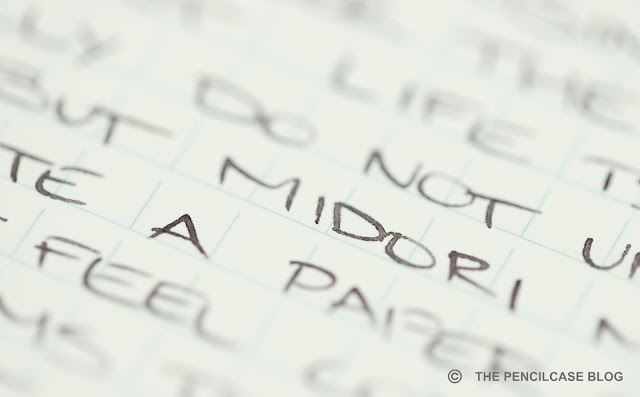
Japan has a pretty unique stationery 'ecosystem'. The Japanese stationery we know today, is still relatively new to us. 10 years ago, it would've been impossible to find most Japanese stationery products that are all over the US and Europe nowadays. Yet most of these brands -Apica, Life, Midori,...- have been well-established in Japan for generations, before finally trickling down outside of the Asian market.
The fact that they remained undiscovered for so long is unusual at the least. But at the same time it's also the reason why I find their products so captivating. These brands have built up a style and quality aimed specifically at their home market. The products we see across the globe today, feel genuine, showing a long history of Japanese traditions.

We'll be looking at the Midori MD notebooks today. These notebooks were sent to me by a Belgian stationery store called Mofelito Paperito (most creative shop name ever?). So big thanks to them!

Simplicity is key in Japanese design, and this reflects in every aspect of the MD notebook. It starts with the packaging: each notebook comes protected in a waxed paper sleeve, and pastel-colored outer sleeve. Even though the packaging is simple and straightforward, you can see the eye for detail in the way it is presented neat and tidy. Opening it up feels almost like a ceremony, it legitimately brought a smile to my face!
The notebook itself is, again, simple and basic but extremely well put together. The outside is made of thick, cream-colored stock that gives strength to the construction. However this thick cardboard is not actually the 'cover'. Rather, Midori designed the notebook without a hard outside cover to give a raw, minimal aesthetic, but also to give the notebook more flexibility. Technically, this would classify as a softcover notebook, however the cardboard stock they used is too stiff to actually bend it. It does open up quite nicely though, and it lays flat on the table.

The paper inside is sewn and glued together, and the whole assembly is held together with a white mesh cloth that wraps around the spine (called a 'super'). This is basically a nude notebook, showing what it would look like if you'd remove the hardcover of a book.
The entire notebook, with its cleanly cut edges and simple details, looks clean without distractions. It's minimal, but in a way only the Japanese can pull off. If that sounds like a vague description, I'd recommend you pick one up and see for yourself why I'm so impressed!

The MD notebooks are available in A6, B6, A5 and A4, each with the option of blank, ruled or grid paper (except the A4, which is only available with blank paper). Each notebook contains 88 pages, which makes them rather thin and compact. The paper stock is developed by Midori in the 60's, and unfortunately I couldn't find any details on paper weight. From a rudimentary calculation, I'd guess it's in the ballpark of 85gsm. That would make it slightly heavier than Rhodia paper, which seems about right.


The only two features on this notebook are a very slim, color-coded (to match the paper style inside) ribbon bookmark, and a label sheet to designate your notebook to a specific task, or archive them once you are done with it.

Because these notebooks don't have an actual cover, you might want to look for something to protect them. Midori sells simple covers made from clear plastic or waxed paper that follow the same minimal approach as the rest of their products. The paper cover is rather thin but adds some style points if you don't like the 'bare' notebook. I opted for the plastic cover because it lets you see the design of the notebook through it, and it features a pen loop for some added functionality.

Let's talk about the paper, because it really is quite something! With the MD notebook, Midori establishes that the Japanese manufacturers have got the science of papermaking down. In fact, I think this may be my new favourite paper from the land of the rising sun, hopping over the already excellent Life Tsubame notebook (reviewed here). I don't really understand how, but Midori managed to create a paper that doesn't feel coated -it actually has some tooth to it-, yet it offers all the advantages that a slick vellum-type paper like Rhodia has.



Nibs never skip or hard start, yet the paper never even shows the slightest hint of feathering or bleedthrough in my tests (even under the harshest 'stress test' conditions I threw at it!). You have to get used to the slightly 'toothy' feeling when you write, but that's also what makes it so ideal for use with pencil or ballpoint (which is where Rhodia falls short). You'll see a minor amount of ghosting on the back of the page, but it doesn't make writing on both sides impossible. The light blue ruling/grid markings are finely printed, which makes them fairly unobtrusive once you've written over them.



Shading is crisp, though maybe a tad less pronounced compared to Rhodia. To my biggest surprise, sheen is actually quite pronounced on this toothy paper. I won't say it's Tomoe River grade, but it definitely far exceeds my expectations.

I think it's not too difficult to see why I fell in love with these notebooks so fast. The design is simple yet timeless, the paper is unusual but fantastic to write on, and every aspect of the notebook and its packaging is cleverly thought through with Japanese precision. Starting at 11€ and going up to 23€ depending on the size (at Mofelito Paperito), the MD notebooks aren't particularly cheap (keep in mind that the pagecount is a bit lower), but you'll quickly realize that you get excellent quality for what you pay!
These products were sent to me by Mofelito Paperito so I could write this review. I was in no way influenced in the making of this review, the opinions shared in this review are completely my own! This post does not contain affilate links.


Agree those are excellent notebooks: simple style, high quality paper, and unobstrusive lines / grids is a winning combination. Better than Apica (strong lines), slightly more refined than Tsubame.
ReplyDeleteYou might want to check Maruman Mnemosyne. Different style but stellar paper (more coated though)
... pretty unique... grrrrr
ReplyDelete???
DeleteThank you for this complete review of this paper. You’ve definitely make your point and I’ll get one as soon as I’ll have a chance to. Love from France, Marjorie
ReplyDelete[margessw(at)icloud(dot)com]
Thank you for reading! They are definitely worth checking out when you have the chance!
Delete